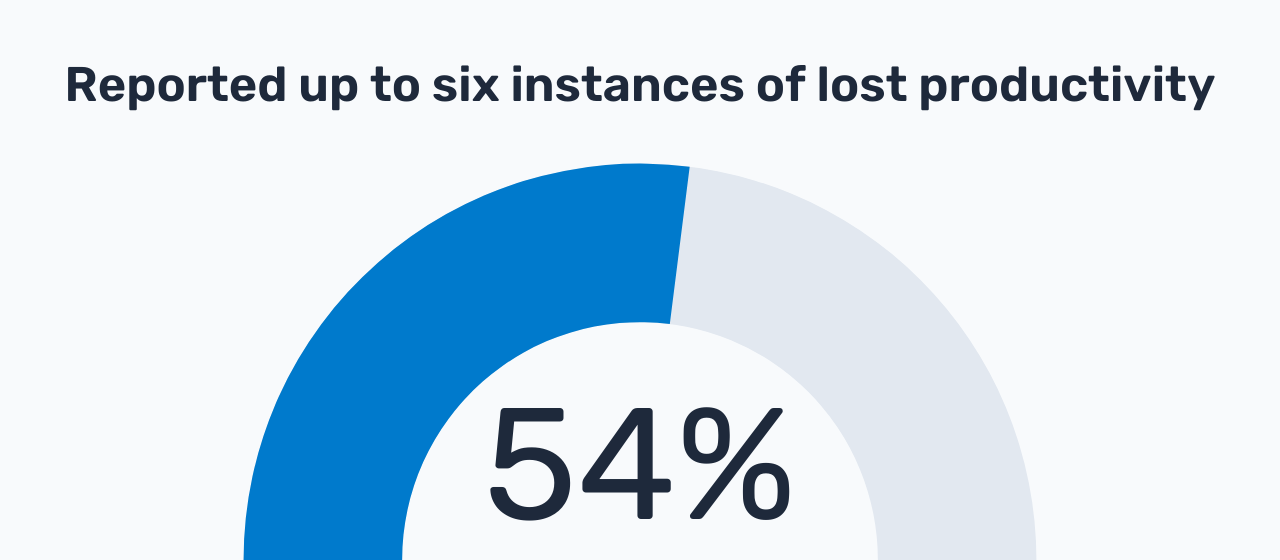The state of hybrid work: what does the future of the workplace look like?

Hybrid work, flexible work from home, remote work, virtual meetings…The landscape of the modern workplace has experienced one of its biggest changes in generations. The COVID-19 pandemic accelerated the demand for remote work, to say the least. According to McKinsey, before the COVID-19 pandemic, only 8% of employees worked remotely. Today, 75% of employees want to work from home or have some form of flexible hybrid work model for two or more days of the week. Major companies like Google, Apple, and Facebook are extending or offering some form of hybrid work option, and most plan on keeping it that way for the foreseeable future.
With that in mind, what is the current state of hybrid work? What is the landscape of the modern workplace going to look like in 2022 and onward? What elements of the era of remote work in 2020 are staying and which will be left behind? What are major B2B software companies doing to better the hybrid work environment and expand the technological limitations of hybrid work? Let’s dive into some of the data to find out.
The current state of hybrid work

A study done by Accenture breaks down the future of work as follows:
- 83% of workers identify a hybrid model as optimal for the future
- 58% worked in some form of a hybrid model during the COVID-19 pandemic (as opposed to fully on-site or remote)
- 40% feel they can be productive anywhere with the right resources and technology
The last two years of remote work has proven that a lot of employees are not only productive at home but actually prefer work from home over being in the office. Leaders and executives who demand employees to return to the office without a flexible work from home option are now facing what is known as the “Great Resignation” – employees are resigning on a massive scale in search for companies with flexible options. The US Bureau of Labor Statistics announced that 4.3 million Americans quit their jobs in August 2021. Additionally, 40% of workers globally are considering leaving their current employers. The demand for hybrid work is at an all time high and companies need to adjust their policies if they want to remain competitive in the post-COVID-19 pandemic job market.
What are the roadblocks for full implementation of hybrid work?
While the flexibility and autonomy of hybrid work is undeniable, there are unforeseen challenges and roadblocks to hybrid work. Here are a few:
- Lack of meaningful connection and engagement at work
- Proximity bias with promotions
- Young employees are struggling to grow their careers
- Security and privacy risks
Lack of meaningful connection and engagement at work
In a hybrid work setting, remote employees often feel more disengaged and disconnected from their company’s culture and their coworkers. 37% of remote workers struggle with communication and 36% struggle with collaboration. Additionally, remote employees expressed feeling two times less engaged than workers who were in-person. Why is this happening? The autonomy and comfort of working from home removes unwanted distractions and micromanagement behavior. However, while this environment can boost productivity, it can feel very isolated and lonely. In a remote or hybrid workplace, employees are unable to have watercooler chats and discussions over lunch about their personal lives, hobbies, and interests. Due to meeting fatigue, most virtual meetings adhere to a strict agenda and must start and end on time to prevent burnout. This leaves little room for employees to develop meaningful connections to their coworkers and thus can lead to job dissatisfaction.
Proximity bias with promotions
Promotions may be heavily skewed towards employees who go to the office. Proximity bias can occur due to an in-person worker’s proximity to leadership, access to mentors and workplace connections, better resources to do their job functions, and having hard work acknowledged by simply being physically present. Studies have shown that in-person workers are more likely to get promoted and remote employees often feel left out of promotions. This form of bias can not only lead to a sudden loss of talented remote employees but also presenteeism from in-person employees.
Young employees experience career development difficulty
One of the key demographics that are experiencing difficulty with work from home and hybrid work are young employees. 43% of workers aged 18-24 felt that their productivity decreased while working remotely. Young employees need more guidance to be successful in the autonomous remote work environment. Their lack of experience in the workforce means they have small networks to rely on. Before remote work, these employees could connect with coworkers and begin to build meaningful relationships, find mentorships, and build a sustainable network that they can rely on. Now, they have little to no opportunities to network and connect with anyone other than their teammates.
Security and privacy risks

A decentralized workforce can put your company and your employees at risk for various data security concerns. A survey by Entrust broke down the concerns of leaders and employees in regards to hybrid work:
- 54% of employees reported up to six instances of lost productivity due to network access issues
- 20% of leaders are concerned about home internet security and data leaks
Offering flexible work from home removes the benefits of high speed internet, internet security, and other important measures that protect employees as they work. Additionally, protected data is vulnerable when employees work in public spaces.
In addition to virtual and technological security risks, there are also risks to having a flexible in-office schedule. 96% of business leaders and 93% of employees agree that a logging system must be put in place in the office to track visitors. Additionally, both are concerned about spreading COVID-19 and the possibility of physical harm occurring to employees.
What are the solutions to these challenges?
The Accenture study highlights an important caveat to the success of hybrid work: access to the right resources and technology. Companies need to bridge the gaps of hybrid work with better technology that will enable better collaboration, productivity, and engagement. So what are major B2B companies doing?
- Google launched its new Work Safer, offering designs to help organizations collaborate and communicate securely and privately in a today’s hybrid work environment
- Microsoft is continually innovating their suite of workplace collaboration tools like Office 365 and Teams to adapt to the changing environment
- Zoom is expanding their virtual meeting software into virtual services such as virtual receptionist, virtual wealth managers, virtual tellers, and more.
How Poll Everywhere is powering hybrid work
With all of the above in mind, it’s clear that the world is in need of versatile solutions that empower employees from all corners of the workplace. Poll Everywhere is enabling hybrid work and inclusive conversations by allowing presenters, meeting hosts, educators, and more engage audiences across hybrid workspaces through live online polling, surveys, Q&A’s and more. Simply put, we work where you work. From conversation starters to project retrospectives, Poll Everywhere is here to bring hybrid and remote meetings to life and collect feedback in real time. Sign up for free today.

New: Poll Everywhere partners with Webex by Cisco
As part of our mission to make presentations more inclusive, we are powering hybrid work with our brand new in-app audience response tool with Webex. The app allows participants to seamlessly follow along with presenters and participate in activities directly in the Webex meeting room. For more information, check out our Poll Everywhere for Webex page or download the app from Webex.